Exhibiting aggressive behavior is a common trait in most dogs. Every dog is capable of biting other animals and humans, regardless of their breed, size, or training. Hence, you must make sure that your dog doesn't exhibit such aggressive behavior at any point in time.
In most cases, canines suddenly become aggressive and attack the owner or other people which isn't natural.
According to a recent study, aggression has become the most common and serious behavioral issue among dogs. It’s also the number-one reason why pet parents seek professional help from behaviorists, trainers, and veterinarians because many times dogs may have an underlying medical problem which makes them exhibit aggressive behavior.
Is Playful Mouthing an Aggressive Behavior?
Most mouthing is normal dog behavior. Playful mouthing is usually less painful than more serious, aggressive biting. Dogs tend to spend a great deal of time playing, chewing, and investigating objects through their mouth. Young pups often chew on our fingers and toes of humans. This kind of behavior is natural in young pups but if it persists even when they’re older there might be some underlying problem.
The best thing you can do is try to curb their enthusiasm to chew or bite. Some dogs bite out of fear or frustration, and this type of biting can indicate problems with aggression. It’s sometimes difficult to tell the difference between normal play mouthing and mouthing that precedes aggressive behavior. A playful dog may have a relaxed body and face but its muzzle might look wrinkled.
The aggressive behavior in dogs generally starts with growling, stiff body, pulling their teeth out, and creating wrinkled muzzle. This is a tell-tale sign of your dog’s aggressive behavior.
Major causes for sudden aggressive behavior
i. Illness and Injury
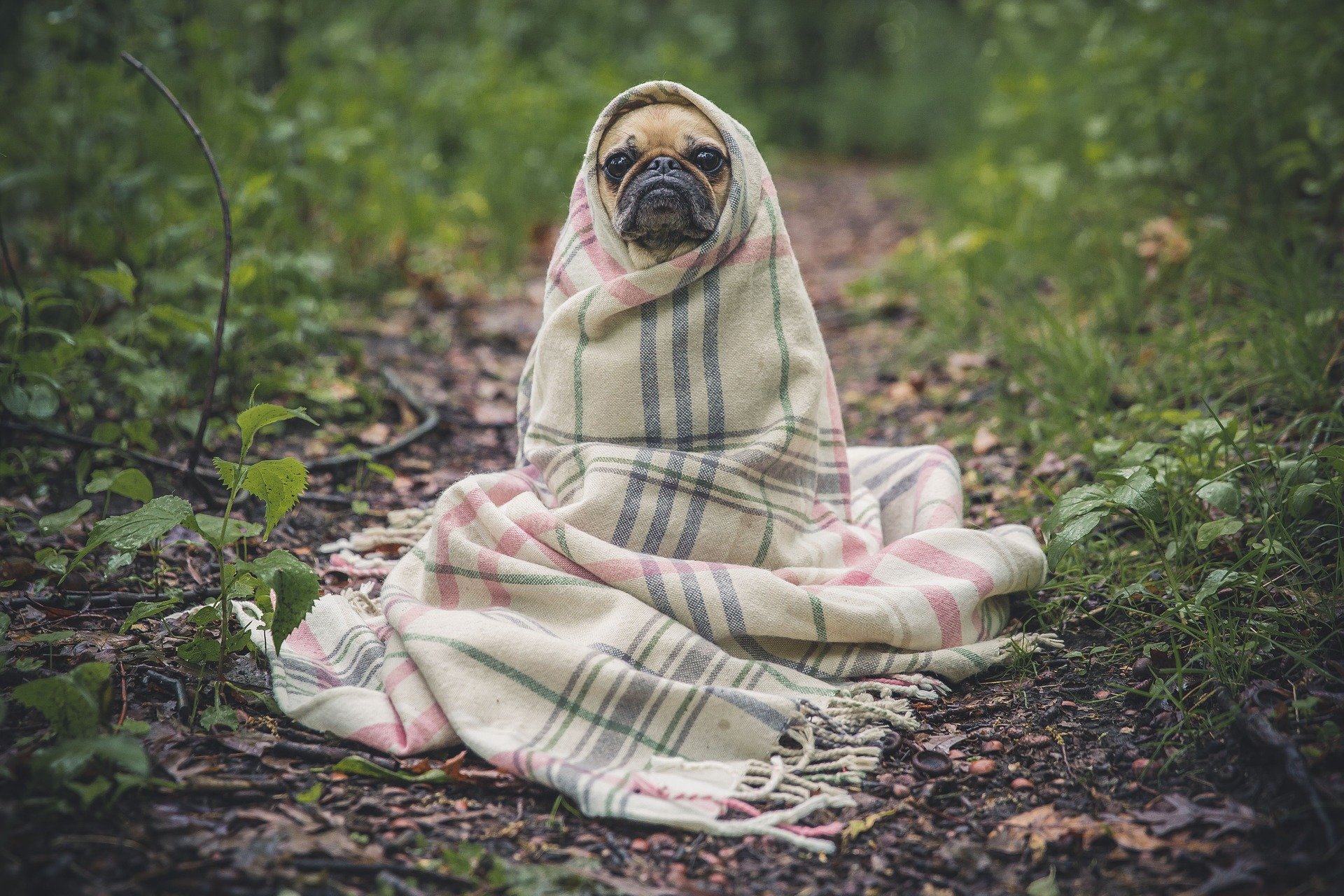
Illness or injury is a common cause for dogs to become aggressive. They show signs of aggression such as growling, snapping, and biting.
The underlying medical condition or pain can make dogs often stressed and sensitive. They react to things quickly and most aggressively. Some possible causes of pain may include arthritis, bone fractures, internal injuries, various tumors, and lacerations. Injury to the head may also cause a sudden outbreak of aggression among pets.
ii. Fear

It’s natural for dogs to exhibit aggressive behavior if they sense they're in danger. When animals are afraid of something, they prefer to run away which is called the flight response. But if escaping isn’t an option, most animals will switch to a fight response. In the case of dogs, they will often growl, snap, and bite.
Fear aggression is characterized by rapid nips or bites because a fearful dog is motivated to bite and then run away. Male and female dogs are equally prone to fear aggression.
iii. Possessiveness
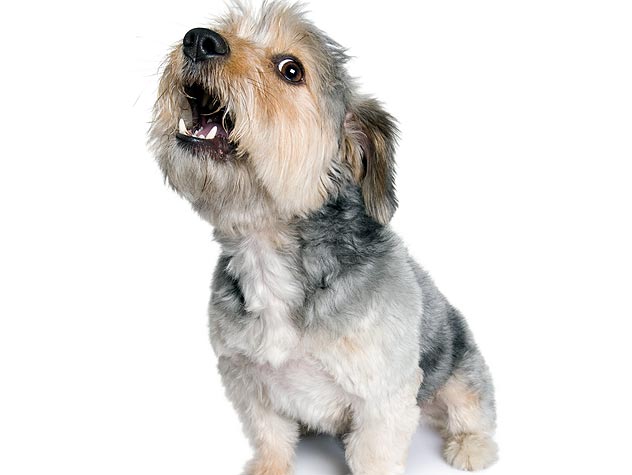
Possession aggression may occur when a dog becomes possessive about their food, toy, bed, or any other forms of possession. A dog exhibiting possession aggression will growl if someone approaches near. They inhibited the tendency to show possessive aggression from their prehistoric predecessors who had to compete for food, shelter, and mates to survive.
iv. Frustration
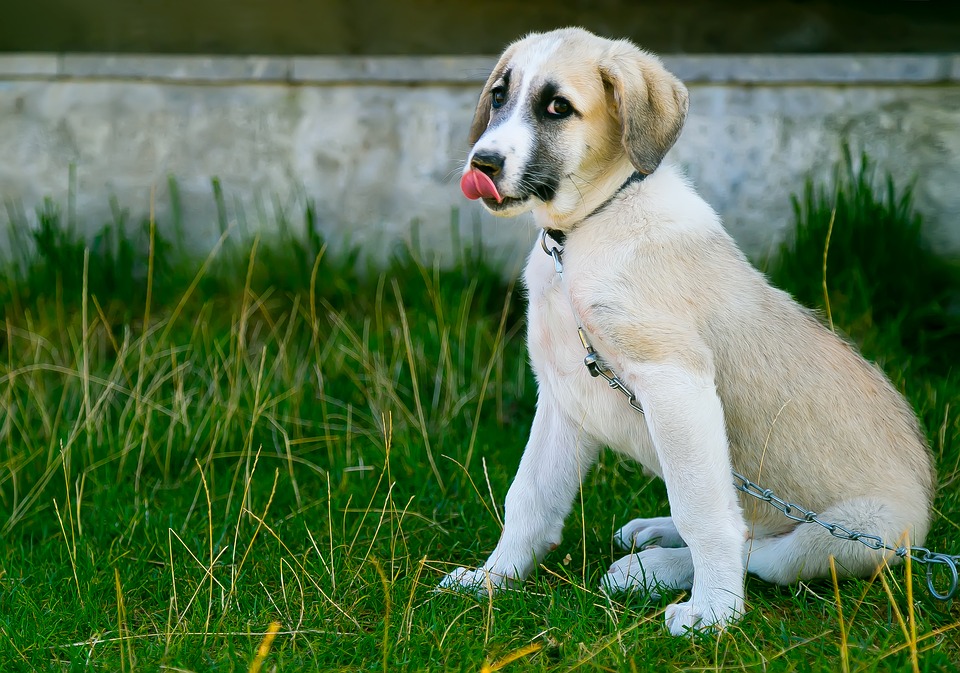
Aggression induced by frustration is often referred to as redirected aggression or barrier frustration. Over time, a dog can learn to associate restraint with feelings of frustration. This may explain why some dogs become aggressive when put behind a gate or inside a cage. They may exhibit aggression in the long run when they’re made to spend a lot of time tied up, restrained on a leash, or behind a chain-link fence.
v. Territorial Aggression
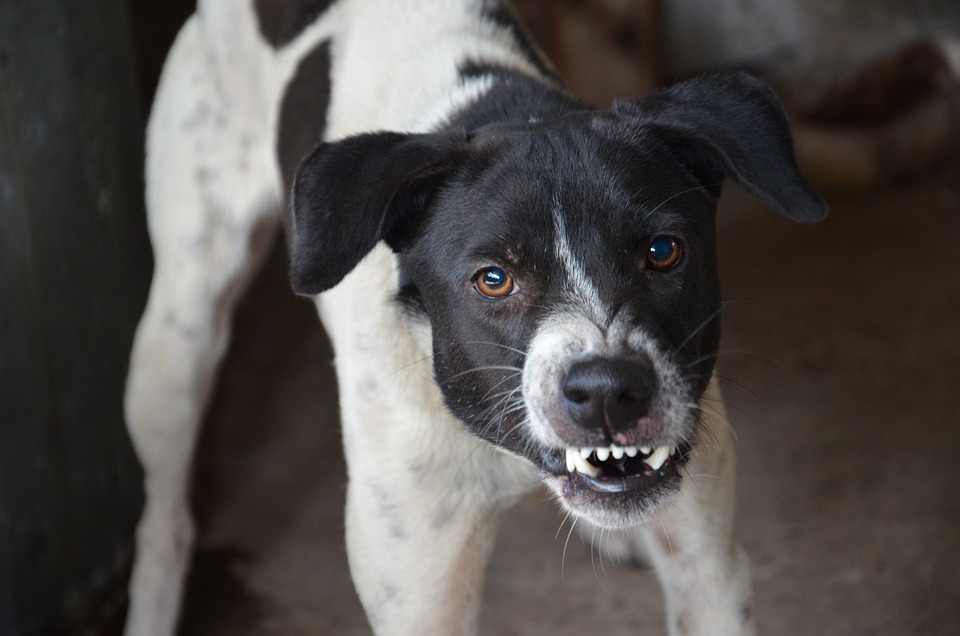
Like many other wild animals, dogs exhibit territorial aggression. This tendency can be linked to their wild relatives such as the wolf. Dogs sometimes show aggression to establish dominance. Territorial possession can induce dominance among pets. Territorial aggression can occur along the boundary regularly patrolled by a dog. Other dogs show territorial aggression only toward people or other animals coming into the home.
How to curb biting in dogs?
Here are some handy ways to curb biting in dogs.
Spay or neuter your dog
Spaying or neutering your dog can help to control their hormonal levels, resulting in more docile behavior.
Spaying a female dog will reduce or eliminate its drive to roam while in heat. It will also eliminate your dog's instinct to wander or fight with other dogs. In male dogs, neutering can help lower their testosterone level, hence making them less aggressive.
Don't let your dog wander or go off-leash
A pet dog is more likely to face wrath from street dogs when they're left unmonitored. Don’t let your dog roam outside freely. Keeping your dog contained lowers the chance of them encountering and fighting with other dogs. This will also prevent them from encountering wild animals like raccoons, porcupine, and hedgehogs.
Avoid stressful situations
If your dog has already shown aggressive behavior, you should avoid creating or putting them in a stressful situation. Watch your dog's behavior to learn signs of stress.
- You should avoid taking them to packed or busy places. A large crowd can overwhelm dogs.
- Don't introduce them to too many people.
- Have a safe space for your dog to relax, walk, or play.
Provide obedience training
Training your dog for basic obedience and curbing aggression is a fruitful option. The obedience-training classes run by expert trainers and groomers can help your dog to
- socialize with other animals and people
- teach them to deal with fears and unwanted situations
- teach dog owners to properly reward or punish their pets
- Identify and curb situations that may make your dog stressed.
Teach dogs to be gentle with their teeth and mouth
Dogs mostly play and learn through their teeth and mouth. It's normal for young pups to nibble on toys, food items, other animals, and humans; however, you will want to start training them to never bite.
Wait for your pup is about to bite. Then, say "No" or "no bite" in a sharp voice. If it stops biting you, offer it a treat.
If your dog continues biting, you should take it to the nearest trainer.
Use a time-out method
If your dog doesn't respond to simple yipping and short refusal, try adopting a time-out procedure. Ignoring them can be a powerful way to tell them that their behavior is unacceptable.
When bitten, yelp loudly. Ignore them for ten to twenty seconds, or place them in space by themself for four to twenty seconds.
Reward your dog consistently for good behavior.
You should start praising your dog and reward them consistently for good behavior. The positive reinforcement will help them continue their good behavior.
- You should only reward their behavior that you want to encourage.
- Keep treats handy so that you can reward them easily.
- Don't overfeed your dog with treats. It can lead to teeth problems or obesity.
Distinguish the different types of biting behavior
A dog may show different types of biting behavior. Most dogs love to nibble on stuff to examine or play with them. Young pups often nibble or playfully bite people. A sudden aggressive biting in older dogs is mostly caused by an underlying medical condition, hormonal changes, or encountering fearful and stressful situations.
Here is the detail information and Infographics on tips about how to make your dog stop biting.
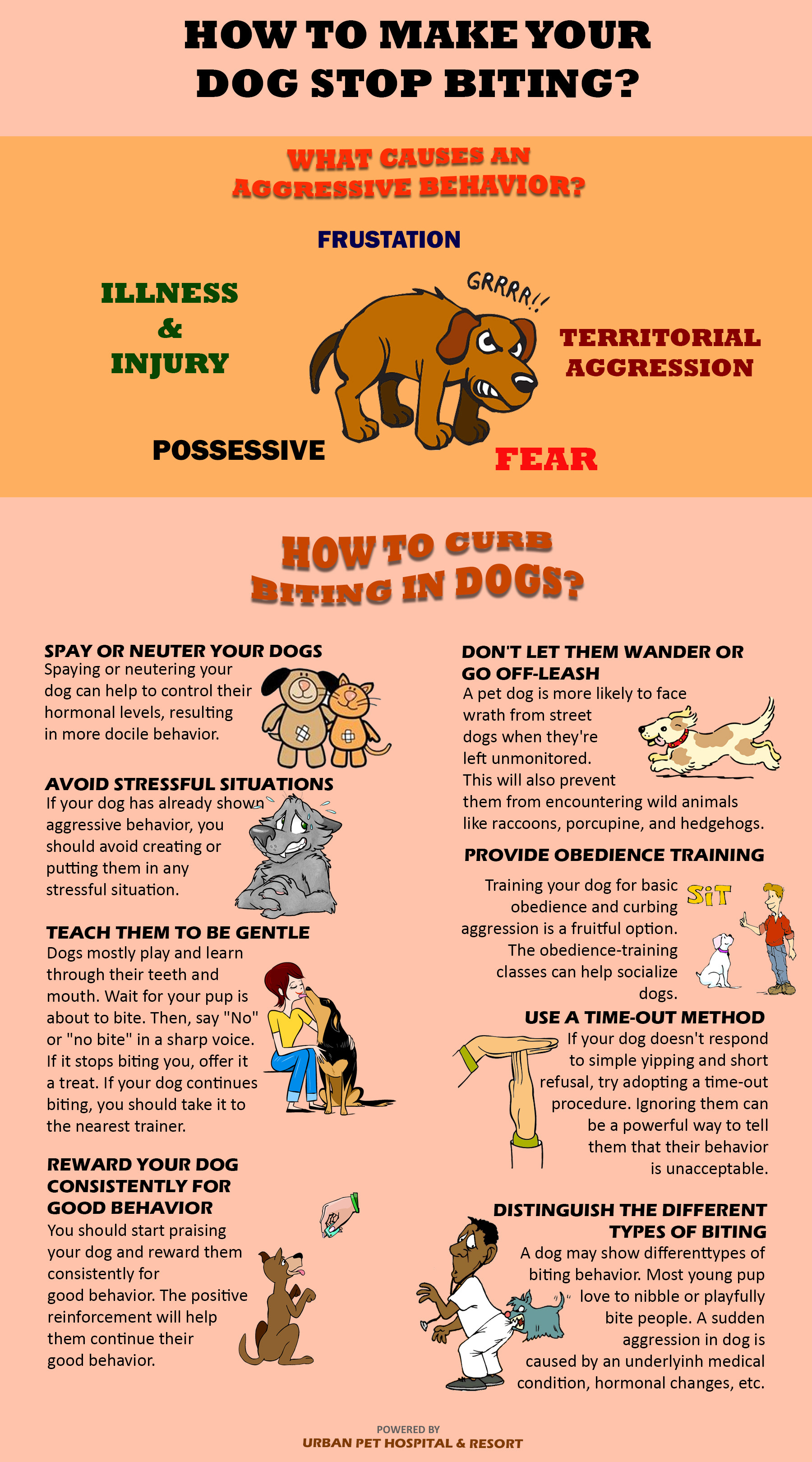
Urban Pet Hospital & Resort is the best doggy daycare in Urbandale. Learn more about different ways to calm an aggressive dog or get in touch with us to start training your dogs for aggressive behaviors.